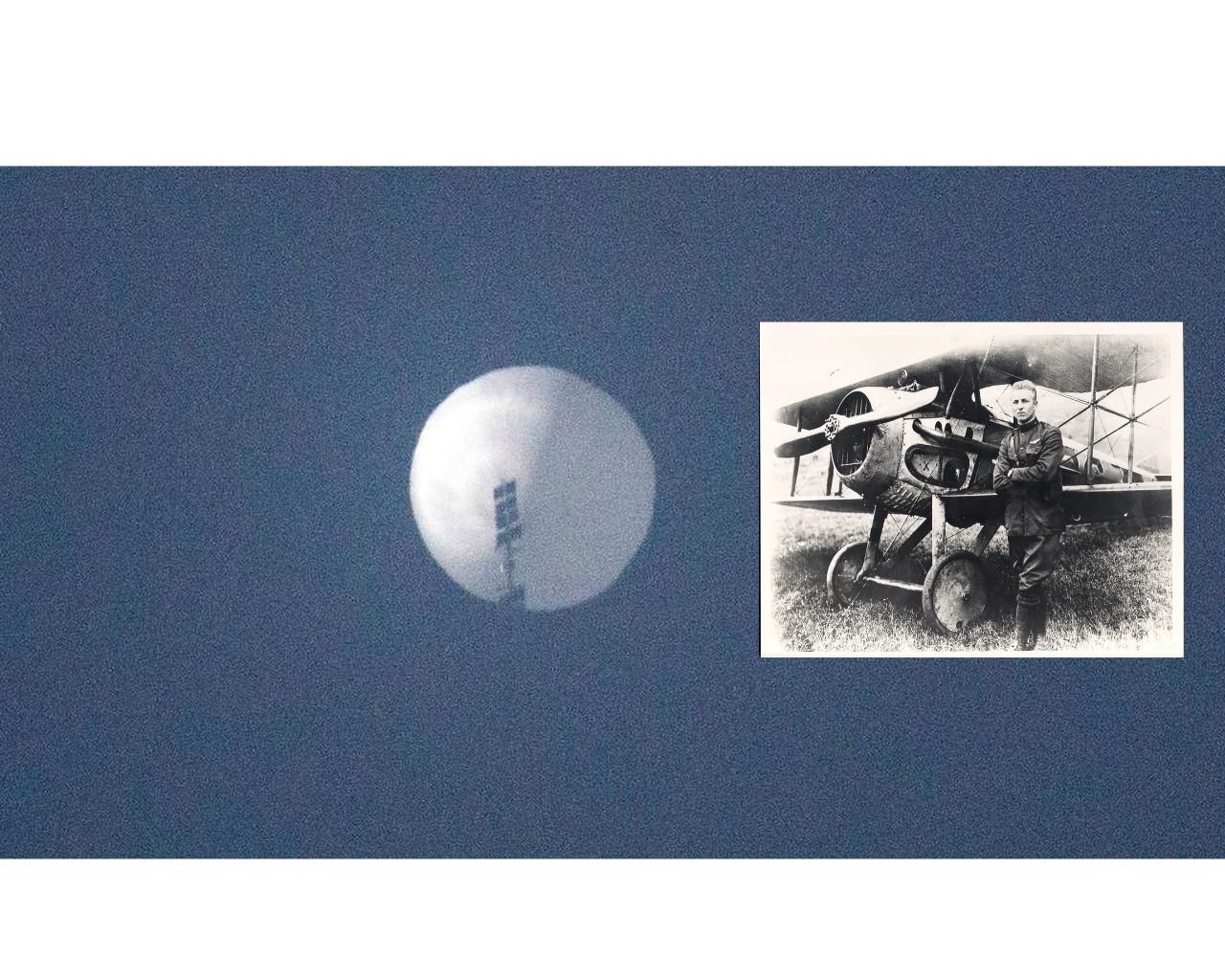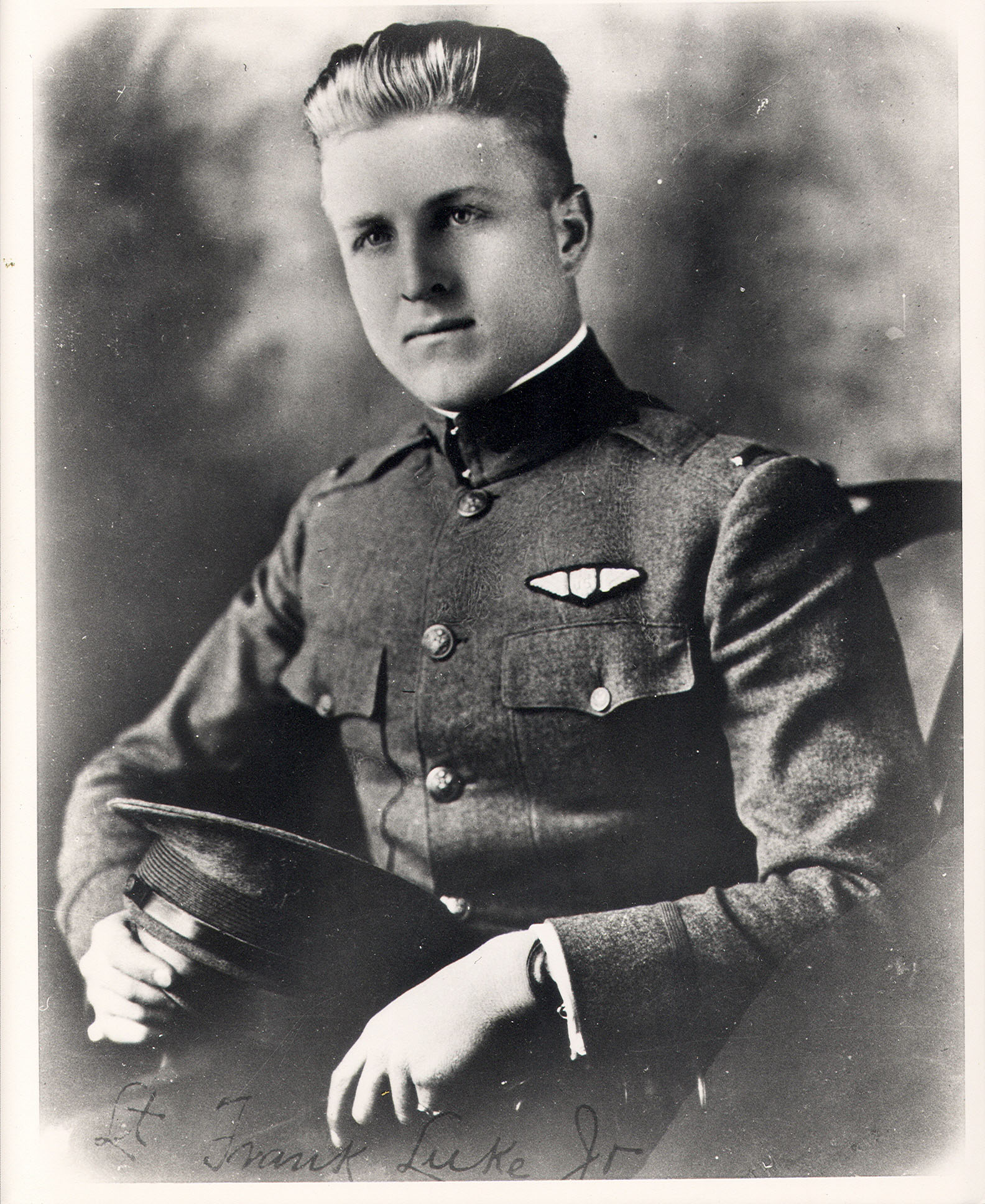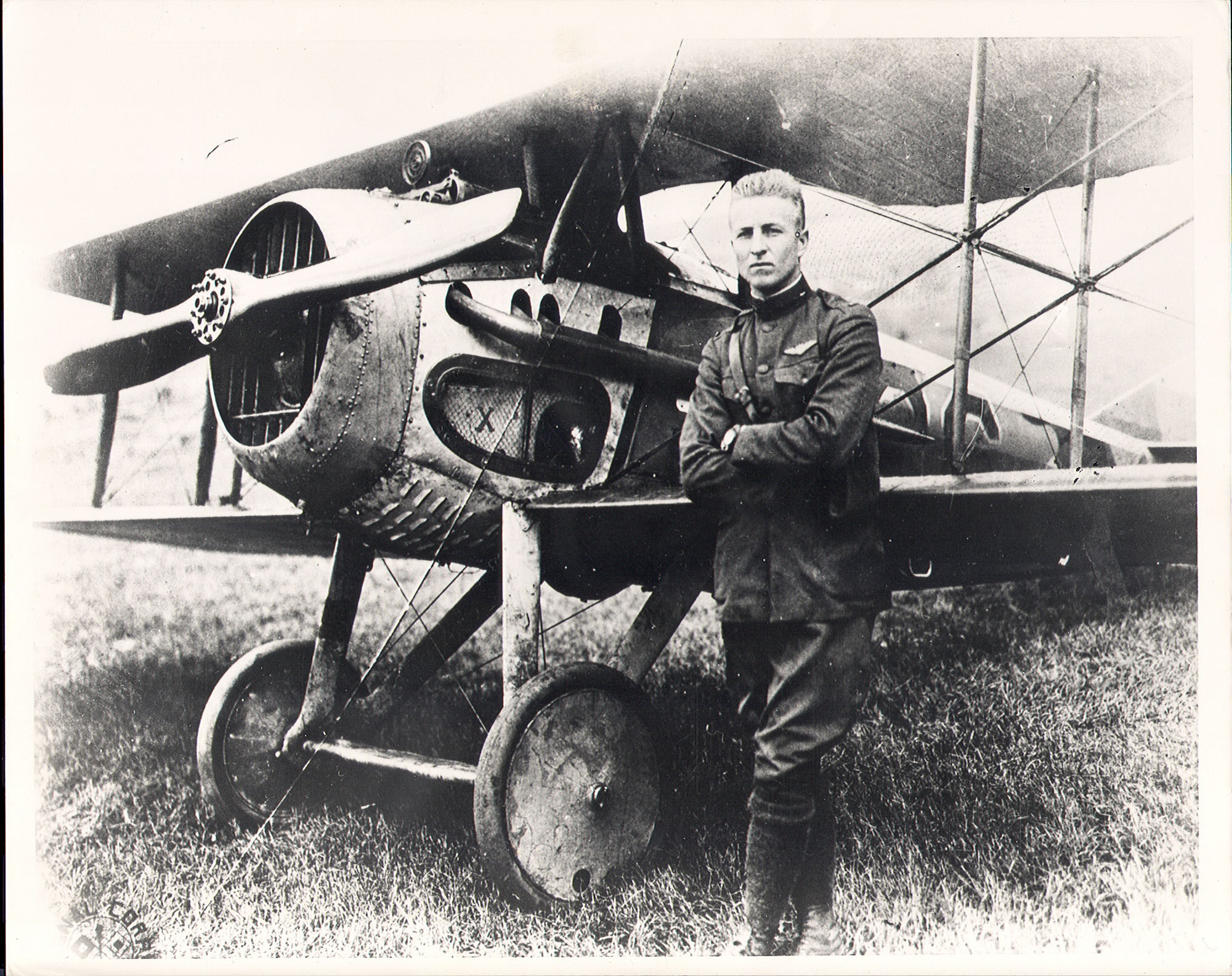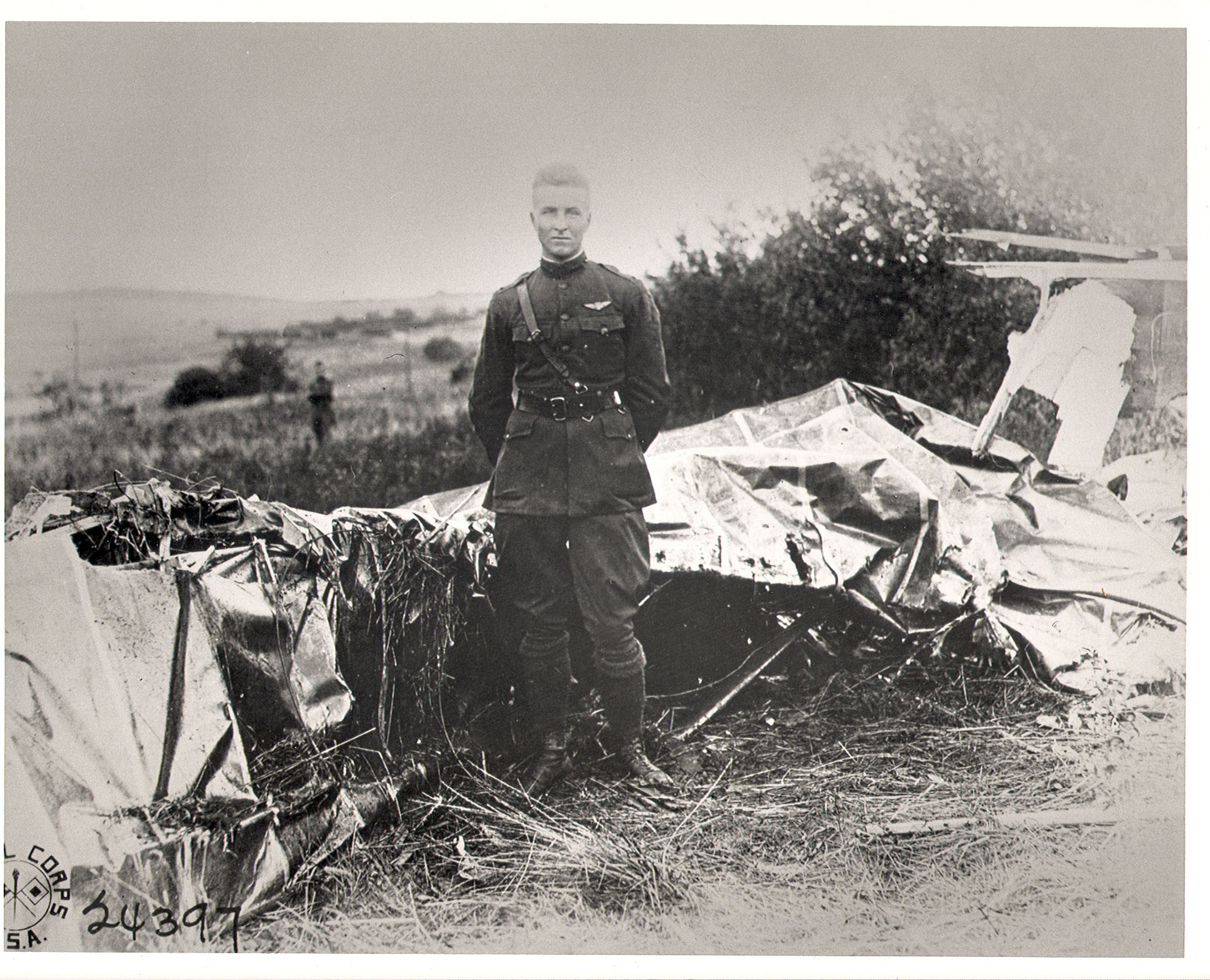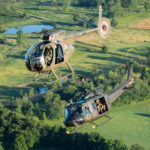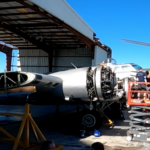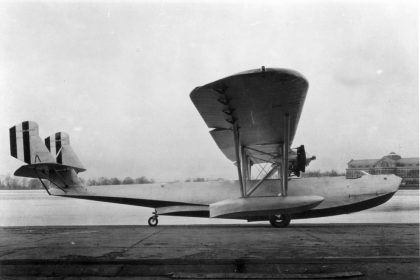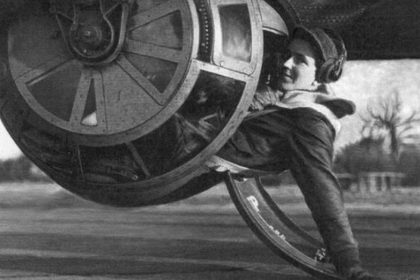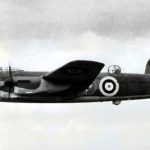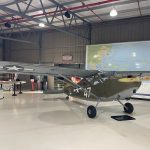On Saturday, February 4th, 2023, U.S. Air Force F-22 Raptors shot down a suspected Chinese surveillance balloon that had transited the country over the previous week, according to the Associated Press, although Department of Defense officials had yet to confirm this at time of writing.
Earlier this week, when the balloon was still over the Continental U.S., government officials had chosen not to shoot the balloon down since they did not believe it posed a national security threat and that falling debris could potentially injure innocent people on the ground. But once the balloon was safely over water, the U.S. Air Force was tasked with taking it down. (Interestingly, the Pentagon shared reports on Friday that a second Chinese balloon was seen floating over Latin America.)
But how does this news have anything to do with vintage aviation, you might ask? Well, the USAF F-22 Raptors which flew this mission used the call sign “FRANK”. This has great relevance since it references the legendary WWI American fighter ace, Frank Luke Jr., who gained notoriety as the Arizona Balloon Buster! Luke is credited with shooting down 14 German observation balloons, perhaps the most dangerous kind of mission any fighter pilot could undertake in WWI since these targets were so heavily defended!
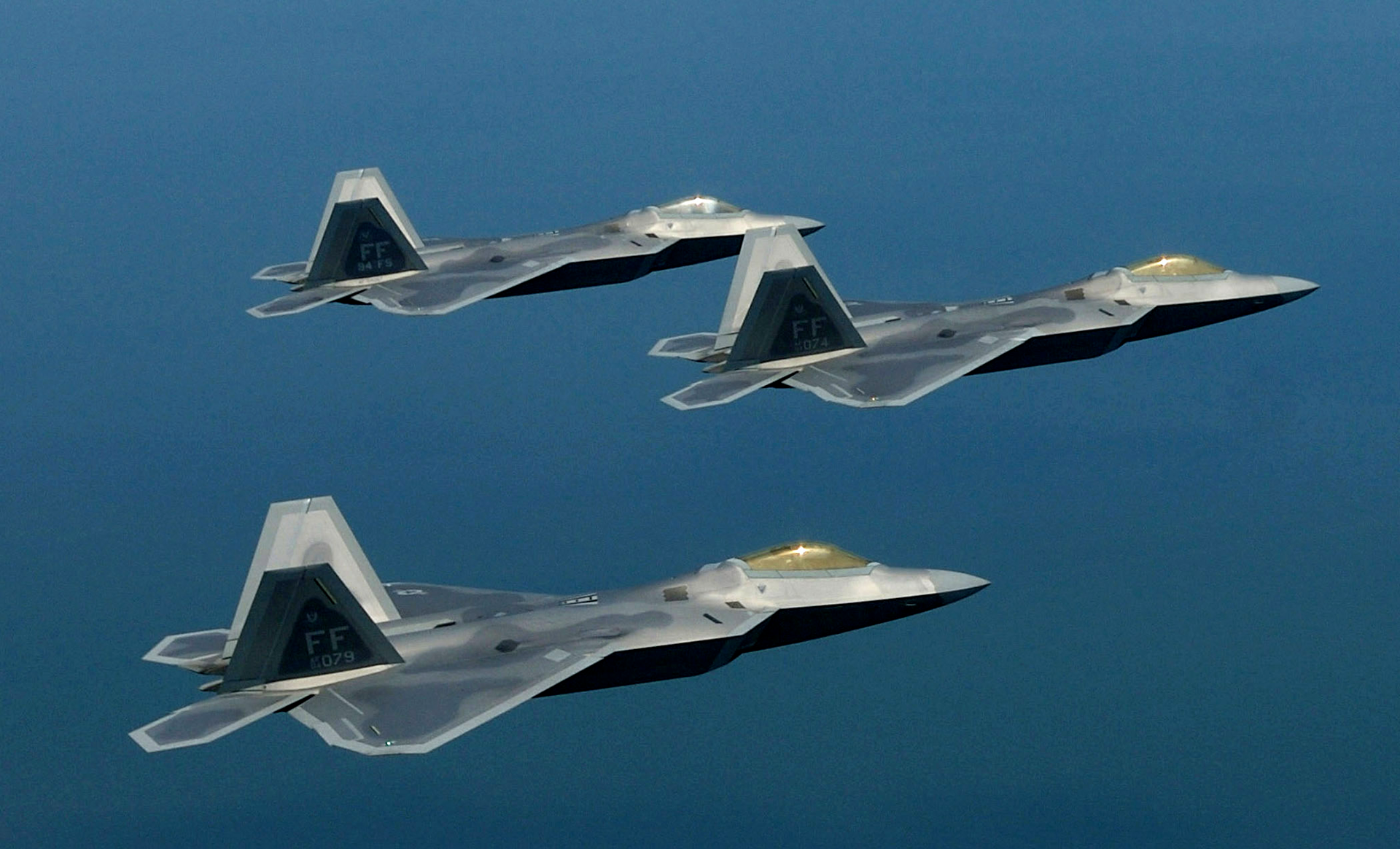
The 944th Fighter Wing based at Luke Air Force Base, Arizona has a nicely detailed bio describing Frank Luke jr’s service; we have reproduced this below…
Frank Luke Jr.
For several months, his grave was marked with a plain wooden cross marked with the simple inscription: “Unknown American Aviator.” To the French people of Murvaux who witnessed Luke’s final flight, and later buried him with what honors the Germans would permit, this unknown airman was the hero of the war. These bits of evidence from various sources, when pieced together, ultimately led to the aviator’s identification. The cross over his grave now bears the inscription “2nd Lieut. Frank Luke, Jr. Pilot, 27th Aero Squadron; 19 victories. Killed in action Sept. 29, 1918.” The young lieutenant’s record and details of his last flight disclose a story as inspiring as ever to stir people’s admiration, and death in action as valiant as anyone to ever earn a country’s highest award.
His story starts in Phoenix on May 19, 1897. Luke grew up in the desert and was known as one of the best athletes at Phoenix High School. He was captain of the track team and a member of the basketball and football teams.
Soon after the U.S. entered World War I, the 20-year-old Luke enlisted as a private in the Signal Corps. From there he entered pilot training and entered combat in France as a new member of the 1st Pursuit Group, 27th Aero Squadron.
His exploits ranged only a scant 17 days, but in this time, as records now reflect, he destroyed 14 German balloons and four aircraft, earning him the title of the “Arizona Balloon Buster.”
Luke’s commander, Maj. H.E. Hartney, said of him, “No one had the sheer contemptuous courage that boy possessed. He was an excellent pilot and probably the best flying marksman on the Western Front. We had any number of expert pilots and there was no shortage of good shots, but the perfect combination, like the perfect specimen of anything in the world, was scarce. Frank Luke was the perfect combination.”
While balloons sound insignificant, in WWI’s trench warfare environment they were critical. They served as observation posts and enabled both armies to look deep behind one another’s lines.
The hydrogen-filled balloons were expensive and of great military value. Normally protected by heavy anti-aircraft gun batteries, there was usually a flight of pursuit planes stationed nearby. To attack a balloon was practically suicide.
But for whatever reason, these were Luke’s voluntary objectives. Some surmised it was because of the easy confirmation as the fireball fell from the sky with a plume of smoke. On Sept. 12, 1918, Luke shot down his first balloon.
His last flight was on Sept. 29, 1918. At least 13 people in the village of Murvaux, France, watched his final blaze of glory. That little group later made a sworn affidavit of his actions that day.
They said they saw an American aviator with a squadron of Germans pursuing and shooting at him. He descended suddenly and vertically toward the earth, then straightened out and flew toward Briers Farm where he found a German balloon, which he shot up and burned in spite of the incessant enemy fire. He destroyed two other balloons while still flying through hostile fire both from troops on the ground and the German fighters.
He did not escape unscathed. Even though already wounded, he attacked one more observation balloon and the Frenchmen saw it burst into flames and plummet to the ground.
Luke descended to within 50 meters of the ground and opened fire on enemy troops, killing six and wounding as many more. But his time was limited. His wounds and the damage to his aircraft forced him to land. As German soldiers surrounded him on all sides, he drew his .45 caliber pistol and defended himself until he fell, mortally wounded by a bullet in his chest.
Infuriated by the savagery of the American’s final attack, the German commandant of the village refused to have straw placed in the cart that removed Luke’s body. He also refused to allow some women to shroud his body with a sheet. Witnesses reported he kicked Luke’s body and snapped, “Get that thing out of my way as quickly as possible.”
Two men, Cortlae Delbert, and Voliner Nicolas loaded the Arizonan’s body on a wagon, escorted him to the cemetery, and buried him. In just five consecutive days, Luke had piled up nine victories: eight balloons and one plane.
His courage in combat not only earned him his nickname, but also the Medal of Honor. His awards included the Distinguished Flying Cross, the Italian War Cross, and the Aero Club Medal for Bravery. In 1930, the American Society for the Promotion of Aviation named him the nation’s greatest air hero. Though unmarried, Luke came from a large family, and many in the Valley of the Sun today carry on the Luke family name.
Further Historical Details: February 5th, 2023 (10:13am)
As an addendum to this story, Vintage Aviation News has just received a fascinating note from one of our regular readers, Matt Scales, a retired U.S. Air Force historian (and former Stratotanker crewman). We thought our audience would be interested in reading it too, reproduced here with permission…
“[I] wanted to say, I read the article about “Frank 01” and loved it. Wanted to add two quick things – first, I was proud because my old squadron (106th ARS) was involved [in the balloon shoot-down]. I was checking ADSB before the event and saw KC-135 57-1473 in a track off Myrtle Beach. As a former KC-135 boom operator with the 106th, I immediately recognized the tail number as one of ours. [As an aside] the 106th not only has a WWI heritage, but was organized by WWI ace James Meissner, who also shot down a balloon.
Second, you probably already know this, but I’m seeing reports that the Raptor from yesterday was from the 27th Fighter Squadron. The last balloons shot down in Air Force history were all downed on November 8, 1918 (four of them). One was shot down by the 94th Aero Squadron around 10:15. Another was shot down by the 95th Aero Squadron, but there isn’t a time stamp. Two were shot down by Lt. Leslie B. Cooper from the 27th at 12:15. So, the 27th retains its title as the last squadron in the Air Force to shoot down a balloon. Oh, and of course, as you know, the 27th was Frank Luke’s squadron!”
Ballons shot down over the United States are nothing new. In 1945, U.S. planes managed to shoot down Japanese balloon bombs. The excellent website Pacific Wrecks published a very detailed report. Click HERE.
Many thanks again to Matt Scales for this additional detail; it places the current news story in an even richer historical context. And if Scales’ name triggers recognition amongst some of our readers, yes this is the very same person who is credited with connecting the hulk of C-47A 42-92847, then at Basler Turbo Conversion’s Oshkosh boneyard, with the aircraft’s WWII combat history as the now-famous That’s All Brother… the Skytrain which lead the main D-Day paratroop force over the English Channel during the Normandy Invasion!







